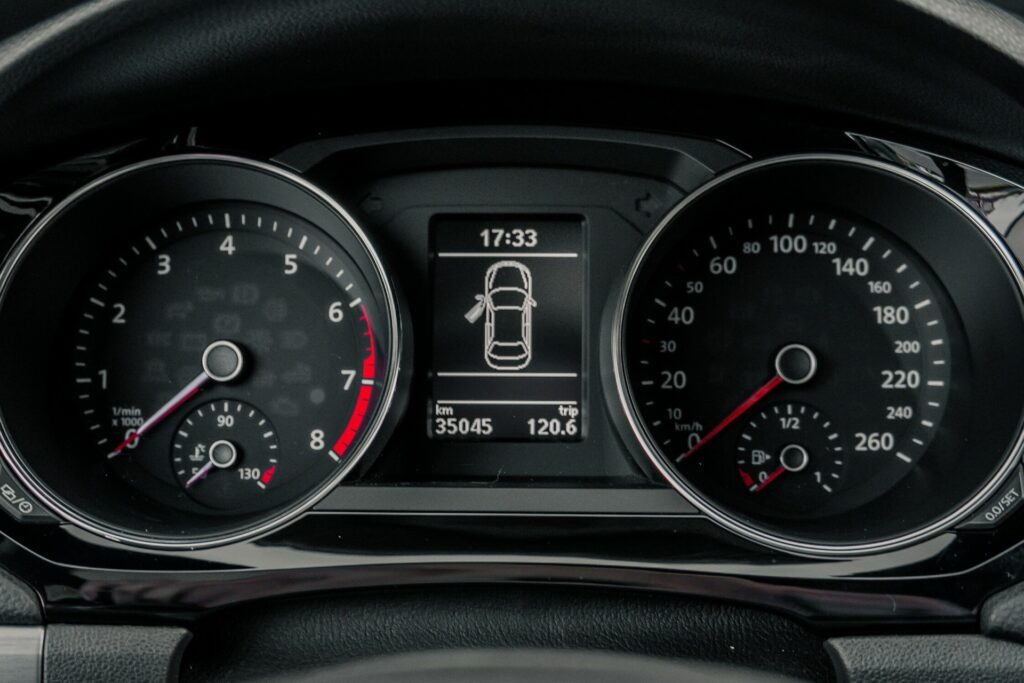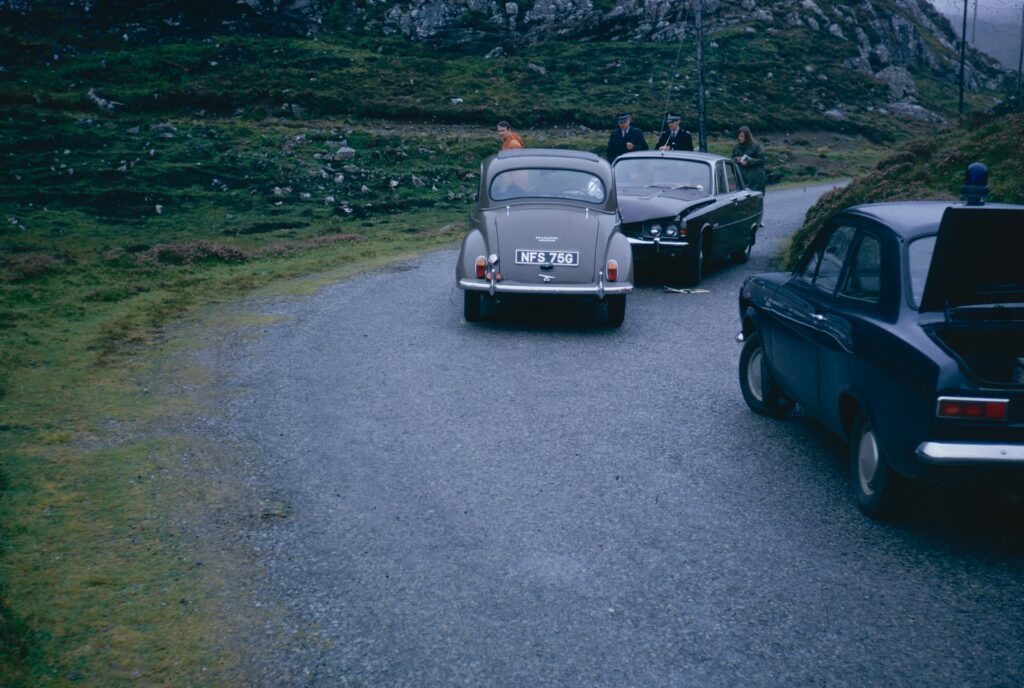
As an Amazon Associate, Modded gets commissions for purchases made through links in this post.
When you think about things that could go wrong with your car, you probably think about your engine, tires or frame. However, one little device could mean big problems for your vehicle — the camshaft position sensor. Is it safe to drive with a bad camshaft sensor? Here’s what you need to know.
What Is a Camshaft Sensor?
A camshaft position sensor is a device that monitors your engine’s inlet and exhaust valves. It sends the information to your car’s main computer — the electric control unit (ECU). The ECU collects data from various sensors across the vehicle to ensure the internal combustion engine gets adequate air, fuel and spark at the right time to work as intended and run efficiently.
Although it’s just one of many eyes the ECU relies on to keep tabs on your vehicle’s performance, the cam sensor plays a more vital role than others. It ensures the camshaft’s position is optimal to support proper intake, compression, combustion and exhaust. One discrepancy can deprive intake and exhaust gases enough room to move freely.
As its name suggests, the camshaft position sensor only keeps an eye on the camshaft, which is at the top of an engine. This sensor reads how well your engine’s cylinders move to synchronize how your engine’s electric coils and fuel injectors activate.
However, the cam sensor is clueless about what’s going on with the bottom half. It works with the crankshaft position sensor to paint the whole picture for the ECU.
The crankshaft controls the movement of pistons. The position of pistons and valves must align to allow air and fuel to flow through correctly.

You can usually find a camshaft sensor in the valve cover at the top of your car’s engine. Sometimes, manufacturers will place it on a cylinder head. Depending on an engine’s complexity, there may be more than one.
Camshaft sensors are hardy. Their circuitry can operate in hostile environments and resist electromagnetic interference or power spokes. Most are magnetic and can generate an alternate current for the electronic control module. Some models do need a separate power source.
What Happens When a Camshaft Sensor Goes Bad?
Your vehicle’s cam sensor can fail due to normal wear and tear. If you get into an accident, the impact can damage this component. Regardless of the nature of its failure, it spells disaster. The ECU will receive low-quality information if it can’t collect and transmit accurate data, defeating the purpose of car engine monitoring for optimum performance.
When this happens, the vehicle can burn more fuel than necessary or less than needed. You may experience a rough engine idle from rest. Your engine may stall and turn your vehicle into a road hazard. You may not be able to start your car at all.
Symptoms of a Bad Camshaft Sensor
Diagnosing a camshaft position sensor failure can be challenging. It manifests itself in various car problems, which also suggest other issues. The most common symptoms include the following.
Illuminated Check Engine Light
A broken camshaft position sensor is one of the reasons this dashboard light comes alive. The other causes for concern include:
- Damaged alternator
- Defective ignition coils
- Dwindling fluid levels
- Dying battery
- Faulty wires
- Inoperative spark plugs
- Malfunctioning mass airflow sensor
- Missing catalytic converter
- Unsound exhaust pipe
- Vacuum leak
- Worn-out timing belt
The list goes on and on. Your car’s internal combustion engine has hundreds of parts, so it could be anything. Hooking a specialized computer into the onboard diagnostics-II port below the steering wheel near the door may aid your search.
Declining Fuel Efficiency

Aren’t you getting the same mileage out of your vehicle as before? Your camshaft position sensor may be shot. Clogged fuel injectors, an old air filter, a dirty oxygen sensor, unsuitable engine oil, deflated tires and misaligned wheels can also explain it.
Dirtier Emissions
Your automobile can’t burn fuel efficiently with a failing cam sensor. Expect the same result when you delay an oil change, there’s excessive fuel in the air/fuel mixture or your gas cap is loose.
Unburned Fuel Smell
If your camshaft sensor has seen better days, it can interfere with combustion. Your engine can’t burn all fuel, causing the unused amount to find its way out of the tailpipe and make its presence known by giving off a distinct gas odor.
Moreover, you can catch a whiff of gas fumes when your vehicle’s evaporative emissions system or fuel lines are leaky.
Transmission Shifting Woes
If your car enters limp mode to reduce the maximum speed it can go, its ECU may have detected something wrong with the cam position sensor, integrity of electrical wires or adequacy of transmission fluid level.
Engine Misfires
Camshaft sensors can have a hand in incorrect internal combustion reactions, and so can fuel mismatches, spark plugs, timing belts and vacuum lines.
Acceleration Hesitation
A compromised cam sensor is one of the reasons your engine may hesitate when stepping on the gas pedal, rendering your vehicle virtually impossible to drive. Other possibilities include issues with fuel delivery, the ignition system, circuits, vacuums and control modules.
While these symptoms could indicate other problems, a combination of these is common with a bad camshaft sensor.
Is It Safe to Drive With a Bad Camshaft Sensor?
The short answer is “no.” Though it might seem small and insignificant, your camshaft sensor sends vital information to the rest of your system, ensuring you can safely control your vehicle. You’ll put yourself and anyone else who drives your car at risk if you don’t remedy the issue as soon as possible.
Though everything could still be normal, you don’t want to take the chance.
How Long Can You Drive With a Bad Camshaft Sensor?

You could continue to drive with a bad cam sensor for as long as the engine doesn’t die. However, staying on the road without replacing your faulty component is ill-advised. The camshaft position sensor serves a critical function. Overlooking its significance endangers you, your fellow car occupants and the other motorists you cross paths with.
How Long Does It Take to Replace a Camshaft Sensor?
The good news is that changing your camshaft sensor is easy, and many car owners choose to do it themselves. Consult your car’s maintenance handbook to find out the camshaft position sensor’s location under the hood and how to detach and reattach it as your vehicle’s manufacturer recommends.
These sensors are available at various price points at automotive stores or online marketplaces. Purchase a new model to ensure the replacement will properly function.
While vehicles are different, adding a new camshaft sensor is generally straightforward. Once you disconnect the negative battery cable and remove the sensor, you’ll need to replace the O-ring seal and install the new sensor.
Avoid Driving With a Bad Camshaft Sensor
Your camshaft sensor is critical in ensuring your car operates safely and efficiently. If you suspect you have a bad camshaft sensor, it’s best to address it immediately so your vehicle remains safe to drive and knows if there is a potential problem.
With a little research, replacing your camshaft sensor is fairly easy. Consult with an experienced mechanic if you have any questions about whether you properly replaced it.
Looking to learn more? Check out our complete car maintenance checklist and work your way toward becoming an expert home mechanic.
Originally posted 11/16/2023 – Updated 8/9/2024
Stay up to date with the latest by subscribing to Modded Minute.
Author
Jack Shaw is a senior writer at Modded. Jack is an avid enthusiast for keeping up with personal health and enjoying nature. He has over five years of experience writing in the men's lifestyle niche, and has written extensively on topics of fitness, exploring the outdoors and men's interests. His writings have been featured in SportsEd TV, Love Inc., and Offroad Xtreme among many more publications.





